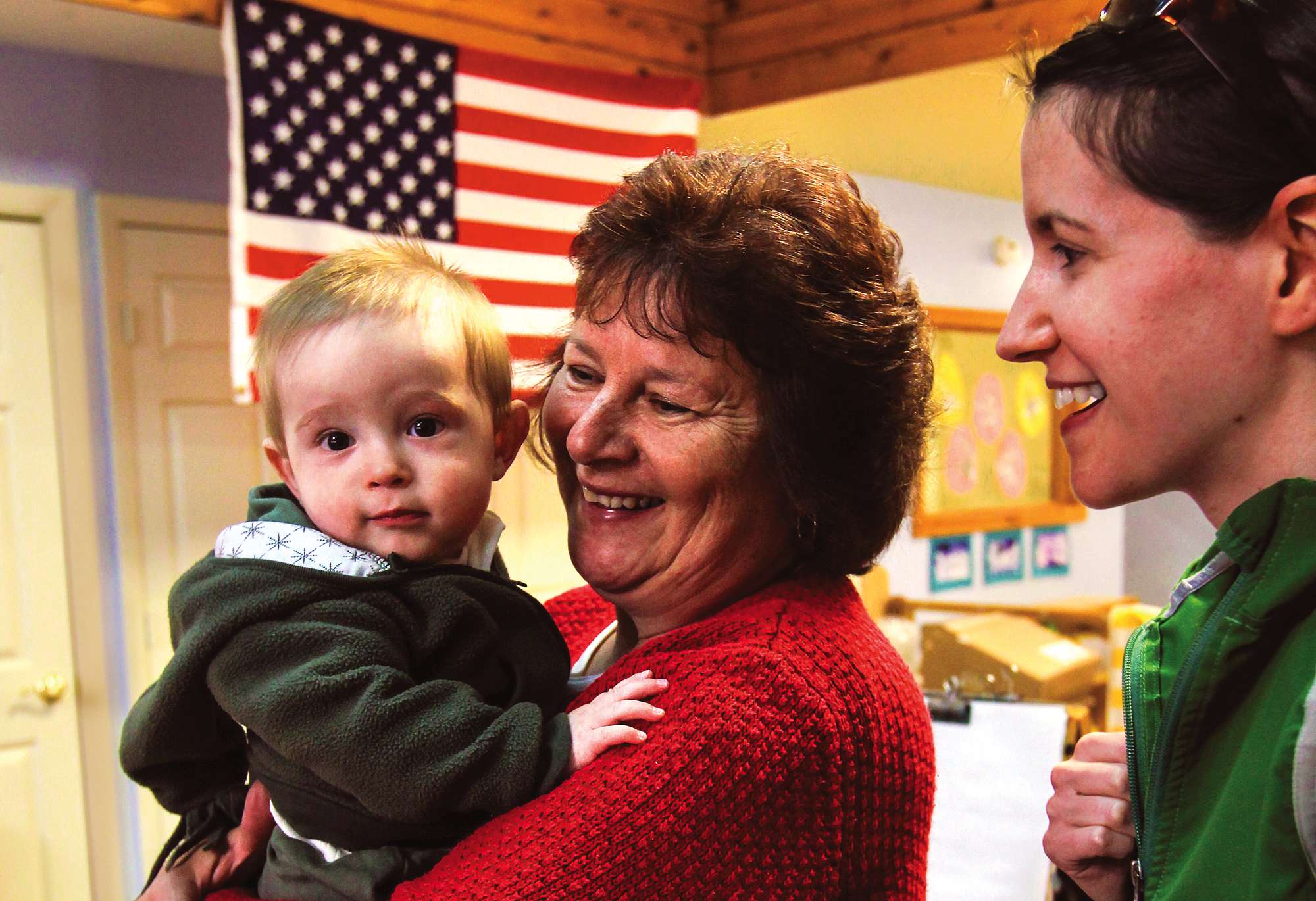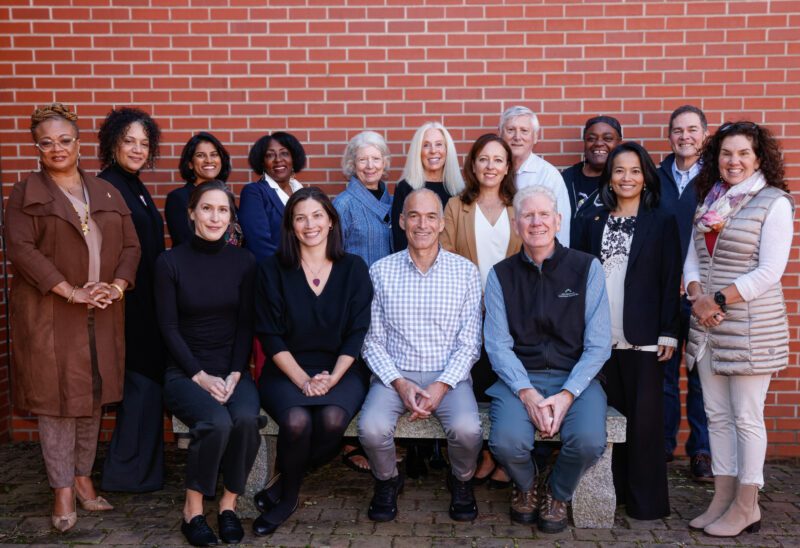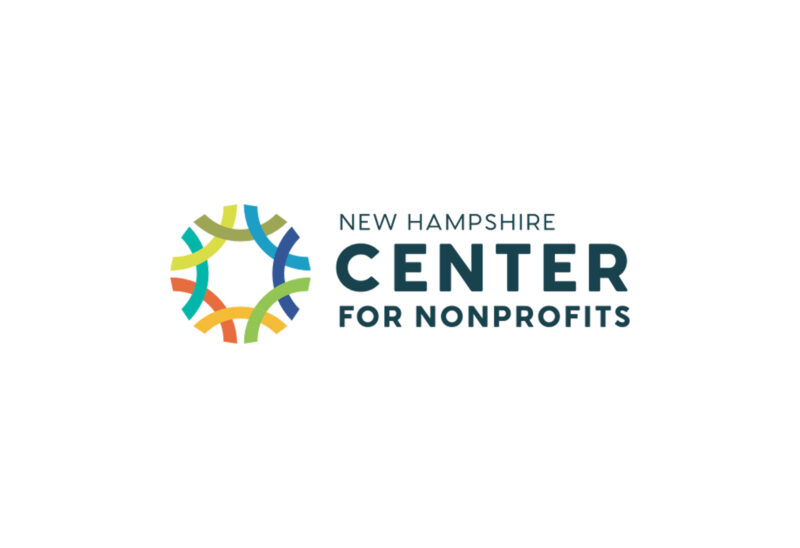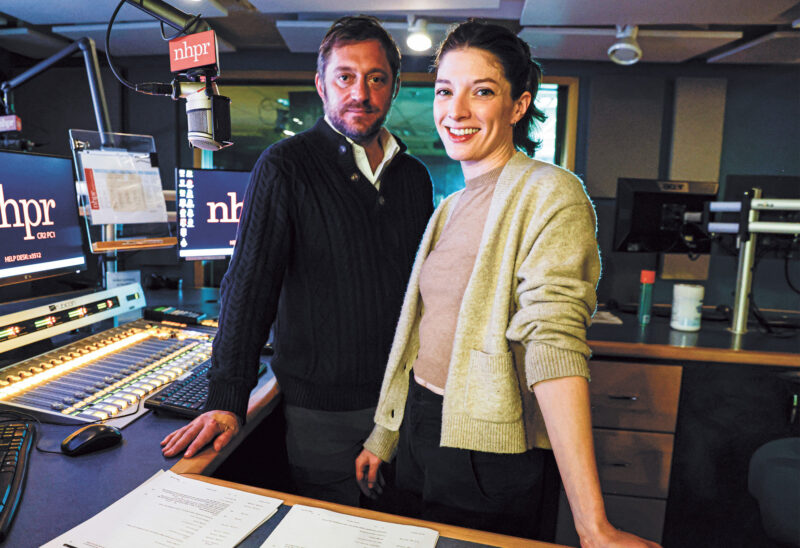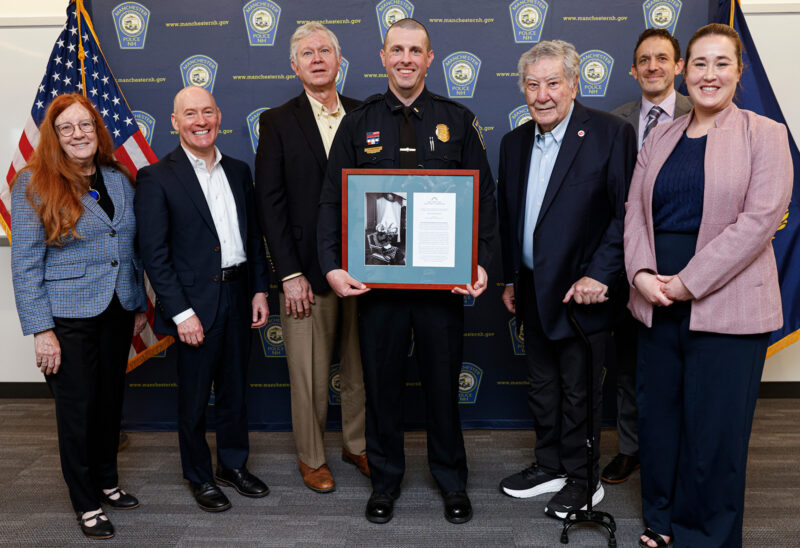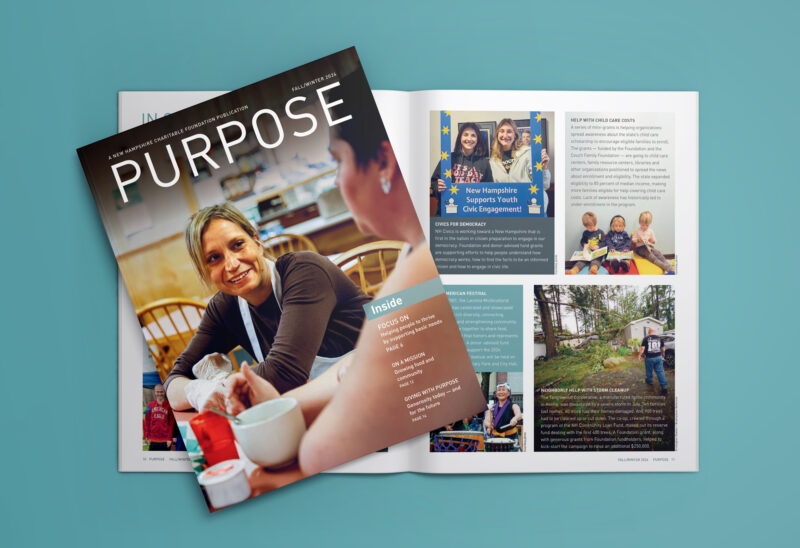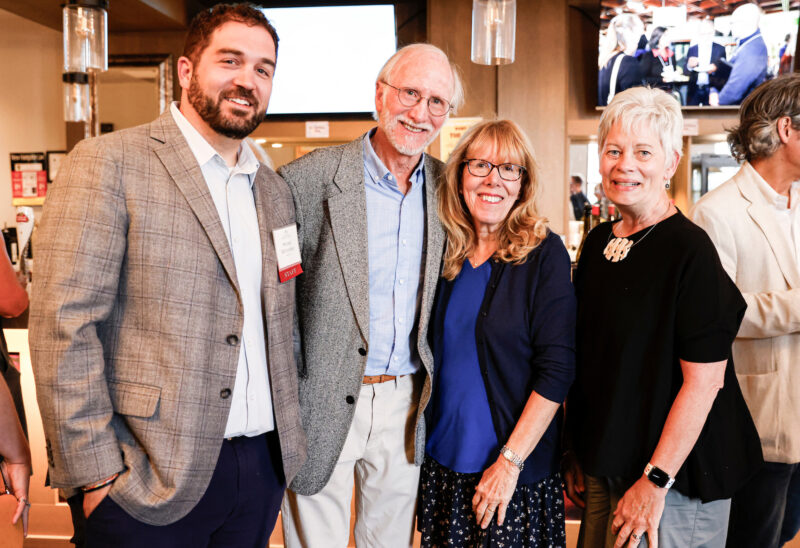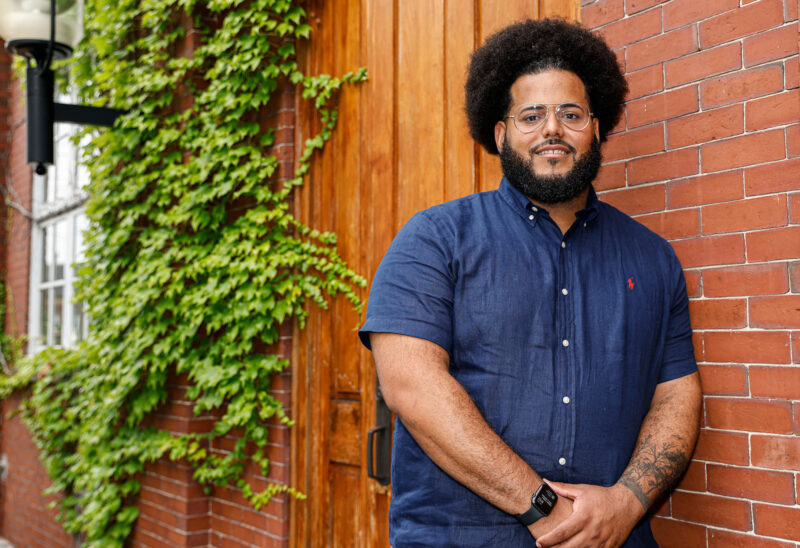Three-year-old Moira is sitting in a circle with a group of toddlers at the White Mountains Community College Early Childhood Development Center.
Miss Heather sings, “If your name starts with Mmmm, wash your hands… .”
“Mmm, Moira! That’s me!” And she is off to soap and water.
What Moira may not know is that the sound “mmm” is a phoneme, or speech sound, and that her teacher has had extensive training in using phonemes and rhyming to develop literacy, that this school is full of new tools selected to help Moira and her classmates learn to read and write.
These children are among the beneficiaries of a comprehensive series of initiatives designed to make Coös County a model for excellence in early childhood development programs and education.
This bold strike was made possible by the Neil and Louise Tillotson Fund, which has invested $5 million since 2009 to improve early childhood outcomes in Coös County.
“There is now a system in place in Coös County that did not exist five years ago to effectively coordinate comprehensive services for young children and families,” said Kirsten Scobie, director of the Tillotson Funds at the New Hampshire Charitable Foundation.
“The ultimate goal is to support Coös to be a place where children and families thrive,” she said, “and that, in turn, will lead to community revitalization.”
“Neil and Louise Tillotson cared deeply for the North County. The Neil and Louise Tillotson Fund is one way their legacy and passion for the region and its people live on, through a comprehensive investment in organizations working together to support young children and families to thrive.”
Investments during the early childhood years translate to success in high school, higher levels of education, economic security, productivity and civic engagement — and savings in everything from special education costs to rehabilitation programs and prison costs.
“When you look at Coös, we’ve got this aging demographic, a hugely low-income demographic. If we’re really going to change the trajectory for Coös, we’ve got to begin with our kids,” said Cathy McDowell, project manager for the Coös Coalition for Children and Young Families.
“We’ve got to invest in our kids. We’ve got to build strong, creative, intelligent, resilient citizens who return to Coös County to build the county up.”
Steve Barba, a member of the Neil and Louise Tillotson Fund Advisory Committee, was convinced by an article written by two Federal Reserve economists.
“They made the case that the soundest, most effective, most-likely-to-succeed investment that any community could make in order to achieve economic development was to invest in children under the age of 4,” Barba said.
That’s what the Foundation, through the Tillotson Funds, has done:
- The Coös Coalition brought agencies together to develop shared strategies, goals, training and measurements. Standard developmental screenings were implemented. About 270 children have already been screened. The goal is for all children from birth to age 5 in Coös to be screened every year.
- Northern Human Services created an infant mental health team which provided services to 201 children last year — previously, there had been a minimum six-month wait for such services.
- The Reach Out and Read program, coordinated by the Coös Coalition, distributed nearly 1,500 books to children in 2013.
- White Mountains Community College improved the network of child development center directors and teachers. Sixty-two of the 78 early childhood professionals in 11 participating centers are now credentialed.
- Plymouth State University (PSU) presented free professional development institutes, dramatically increasing training in evidence-based strategies and curricula.
- PSU has graduated, on full scholarship, three teachers with early childhood degrees who will work in Coös for at least two years. One more will graduate next year.
- Partnerships have been created between early childhood development centers and local school districts, improving school readiness and transitions between schools.
- New models of distributing financial aid to North Country students studying early childhood development were developed and piloted.
These investments in children now play out every day in early childhood centers throughout the county.
Demri, 4, is dressed as a mail carrier, delivering letters at the White Mountains Community College Early Development Center. The blue mailbox stands ready, each child has her own letterbox, vocabulary words related to the post office are displayed. The buying of stamps is a coveted activity.
That might look like kids playing make-believe — and it is. But it is also kids learning to read, and write, and calculate, and imagine themselves as integral members of their community.
The “post office unit” — which came, with materials, from one of the play-based strategies trainings — has these children captivated.
“They’re writing galore,” Center Director Sue Cloutier said. “They’re writing letters to each other.”
Moira has penned a letter to a classmate that relies heavily on the use of capital G’s.
This center could not have afforded these supplies.
“We’ve got to invest in our kids. We’ve got to build strong, creative, intelligent, resilient citizens who return to Coös County to build the county up.”– Cathy McDowell, Coös CoalitionTweet This
Meanwhile, Evan, 5, zooms by on a new wooden truck. Behind him, children play with new blocks that teach, well, physics: ramps and gravity and levers. Shelves are full of new books such as Corduroy, Bug and Bear and Z is for Moose. “You’re filling their brains full of vocabulary,” said teacher Jennifer Gilbert.
Six infants have new cribs. There are iPads in each classroom for assessment and planning.
The children have all been screened with the Ages and Stages Questionnaire now being used by pediatricians, child development professionals and others statewide.
“This has been a long-standing dream of mine,” Cloutier said. “We’re all speaking the same language and sharing the same information.”
Should a child need additional observation or services, those are now available.
“It definitely feels like there are more people working as a team on each child’s behalf,” said Gilbert.
The teachers coordinate with the local SAU — so the kids are ready for kindergarten, and kindergarden is ready for them.
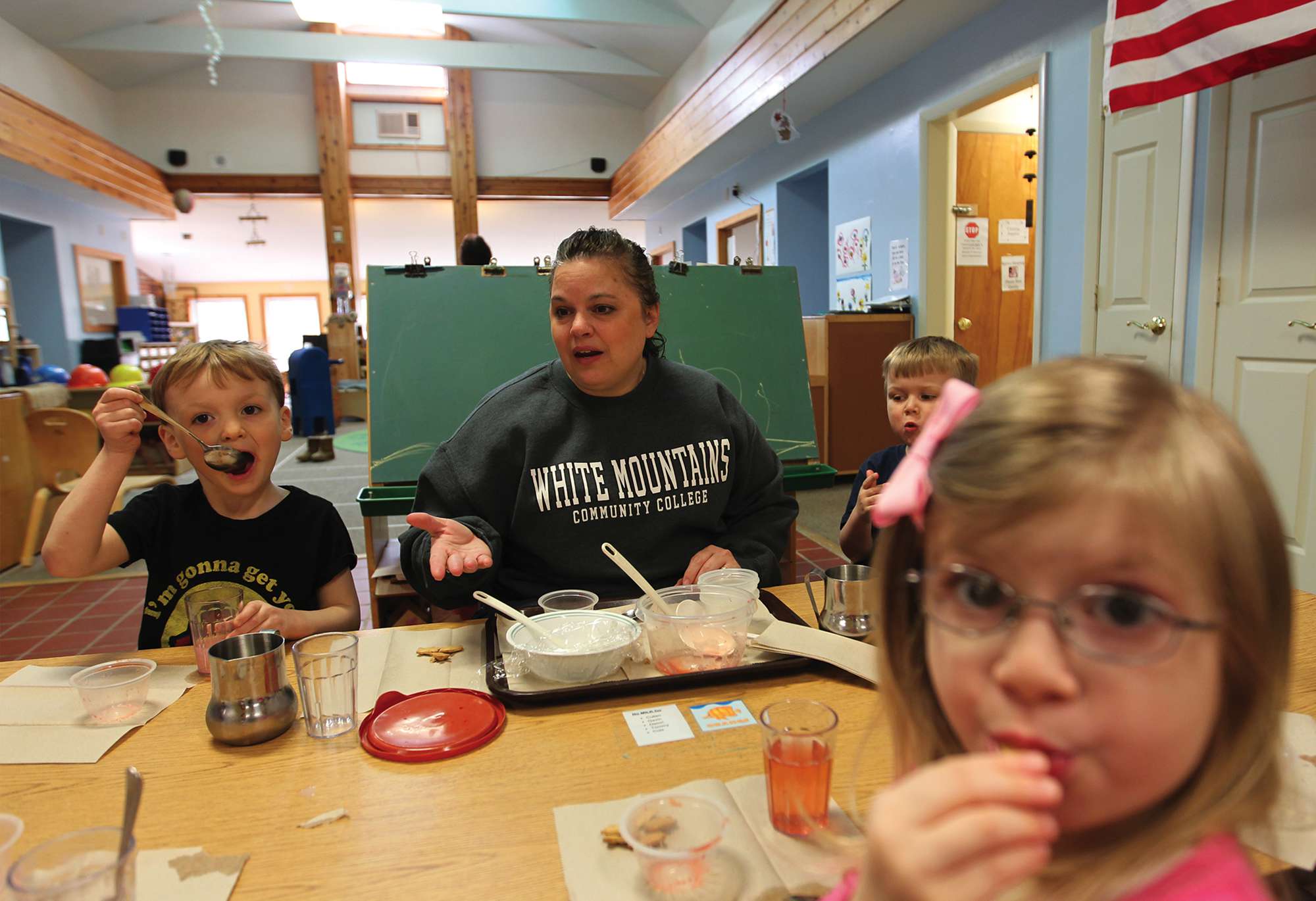
If it were not for the New Hampshire Charitable Foundation, I would not be here.– Wanda Riff, who graduated from White Mountains Community College last May with her degree in early childhood education thanks in part to Foundation scholarshipsTweet This
Wanda Riff, a preschool teacher at the center, got a scholarship to get her degree at White Mountains Community College.
“If it were not for the New Hampshire Charitable Foundation, I would not be here,” Riff said. She maintained a perfect 4.0 because, she said, “I wanted to make sure the people who invested in me got a good return on their investment.”
Great strides have been made; challenges remain. In Coös County average wages for early childhood teachers remain dispiritingly low: between $8 and $11 per hour.
“This is an industry that’s really doing its best on very little,” said Patricia Cantor, who chairs the Early Childhood Studies Department at Plymouth State University.
Riff is deliberate about telling her students that people who cared invested in them — and bought these books, blocks and writing materials.
“It’s better invested at the beginning, when their brains are developing,” she said. “If they have that mindset that they want to achieve, they’re going to want to go to college, earn a good, decent living and invest in their community.”
Riff envisions one of these children coming out of college, starting a business and thinking: “How can I help my community? … Oh, maybe I can build a factory back in my hometown.”
This originally appeared in the Foundation’s 2014 Spring/Summer Purpose Newsletter.

